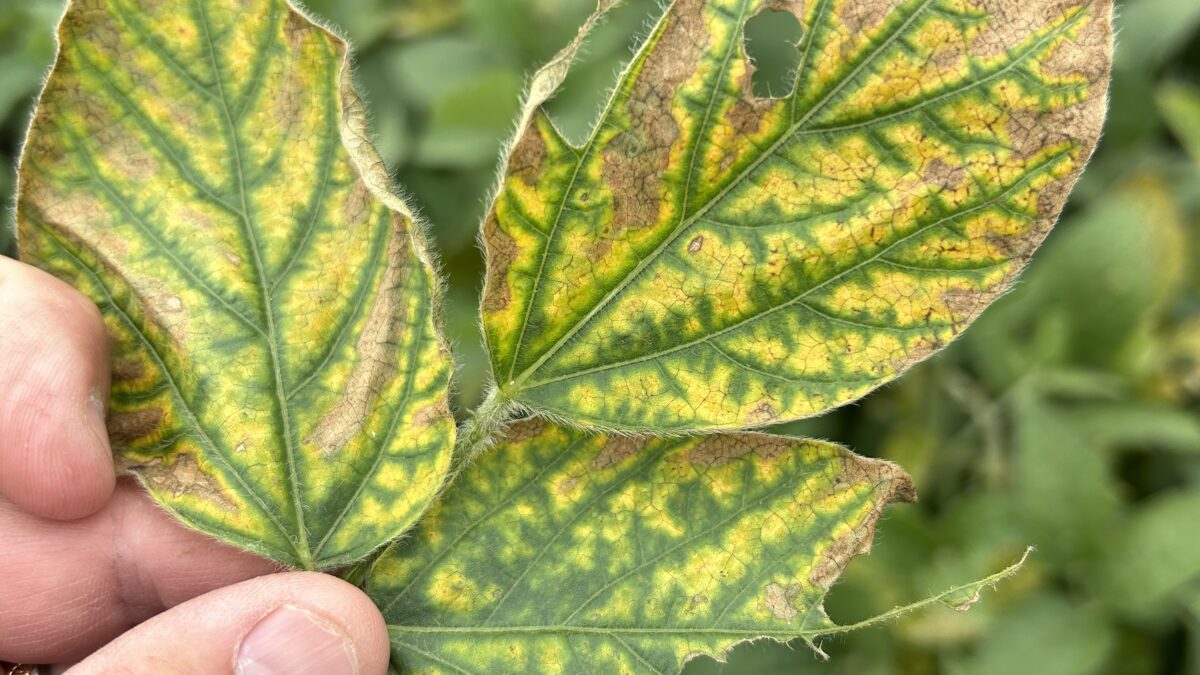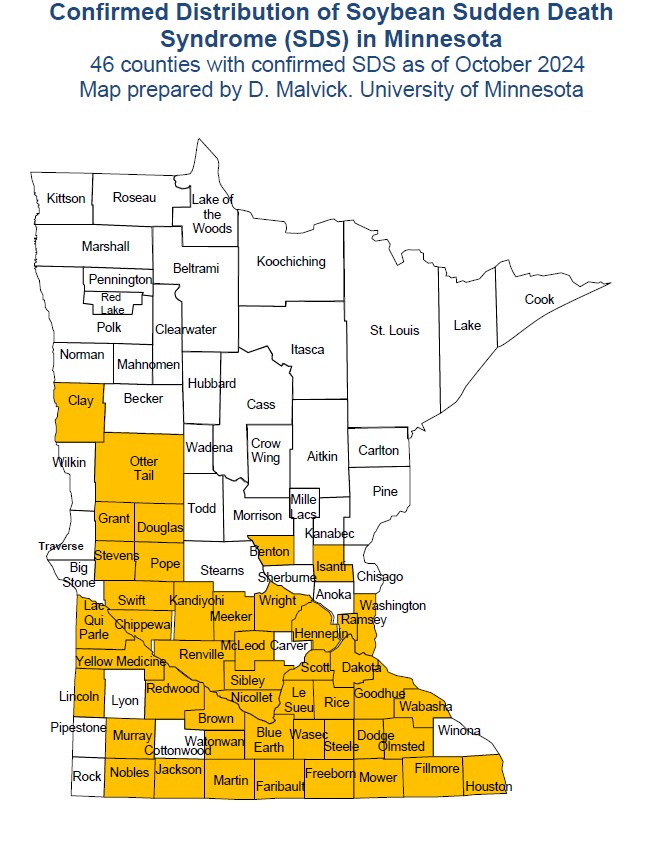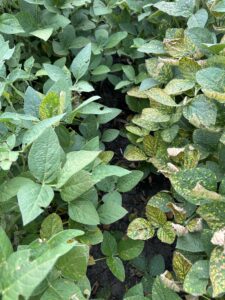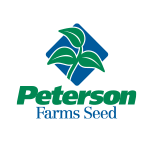SDS on the Rise: Managing Its Growing Impact


The U of MN expanded the number of counties with confirmed SDS in 2024, with several additional counties suspected but not confirmed. (Credit: Dean Malvick)
2024 was a year for diseases. The conditions – cool, wet spring followed by periods of high humidity – created a prime environment for crop diseases. Among them was sudden death syndrome (SDS) in soybeans which continued its march into the region.
Confirmed reports of SDS increased in frequency and severity, with measurable yield losses in southeastern North Dakota and across Minnesota.
The good news is 2024 was an excellent year to get expanded disease ratings and more solid evaluations on which varieties perform well against the disease.
Timing Key with SDS
SDS is a tricky disease. By the time its classic visual symptoms—interveinal chlorosis and leaf necrosis— appear, usually in late July or August, the damage has been done. Infection occurs in the spring under cool and wet conditions when the fungus infects seedlings before emergence. As the disease progresses, toxins produced in the roots migrate to the leaves. Once symptoms appear, treatment options are ineffective.
Key Management Strategies
We already have tools in the toolbox to combat SDS.
1. Genetics: The best defense

Notice how the disease impact is topped in its tracks by resistant variety. Genetic resistance is a great management tool.
The most effective tool against SDS is genetics. Like how certain corn hybrids show tolerance to Goss’s Wilt, soybean varieties have varying natural tolerances to SDS. The 2024 season was invaluable for testing and identifying which varieties excel under SDS pressure. Boy, did we find out we have some superstars in the lineup!
2. Seed treatment: Strengthen your line of defense
Seed treatments offer another powerful weapon against SDS. Options range in strength and cost, so selecting the right treatment depends on your disease pressure and budget.
Milder cases: HeadsUp, commonly used for white mold, offers some protection against SDS.
Moderate to severe cases: Peterson Select SDS (HeadsUp Plus, with a higher rate of thiabendazole), or products like Saltro and Ilevo, provide superior protection.
Carefully weigh the cost per acre, treatment efficacy and expected disease pressure to choose the best option for your operation. Remember that infection occurs underground, so foliar fungicides aren’t effective on SDS.
While SDS continues to expand its reach, there are effective tools to mitigate its impact. Selecting resistant varieties, investing in robust seed treatments, and employing sound agronomic practices can help protect yields and limit losses. With the insights gained from 2024, we are better equipped to manage SDS and keep it from marching further into our fields.











